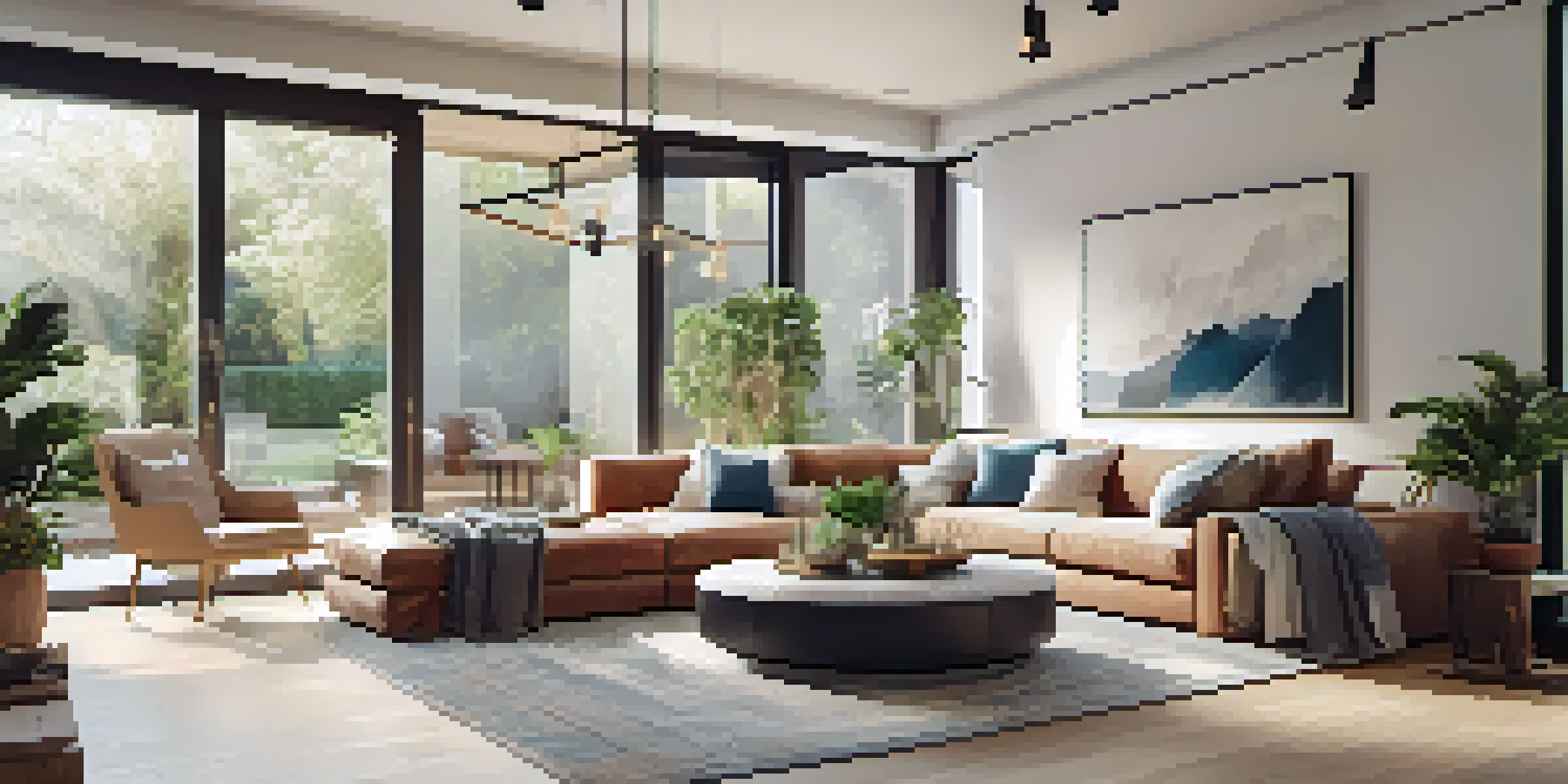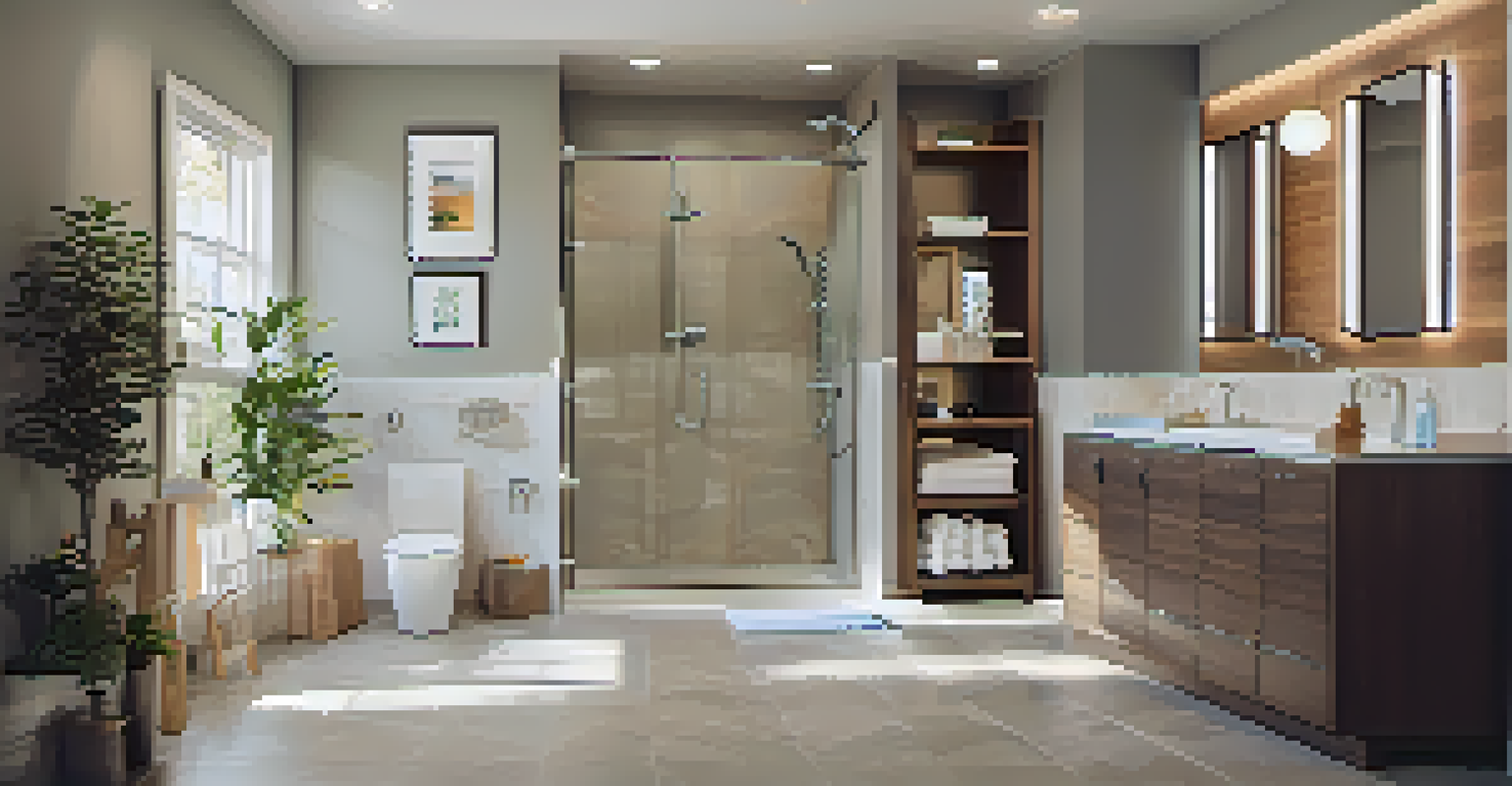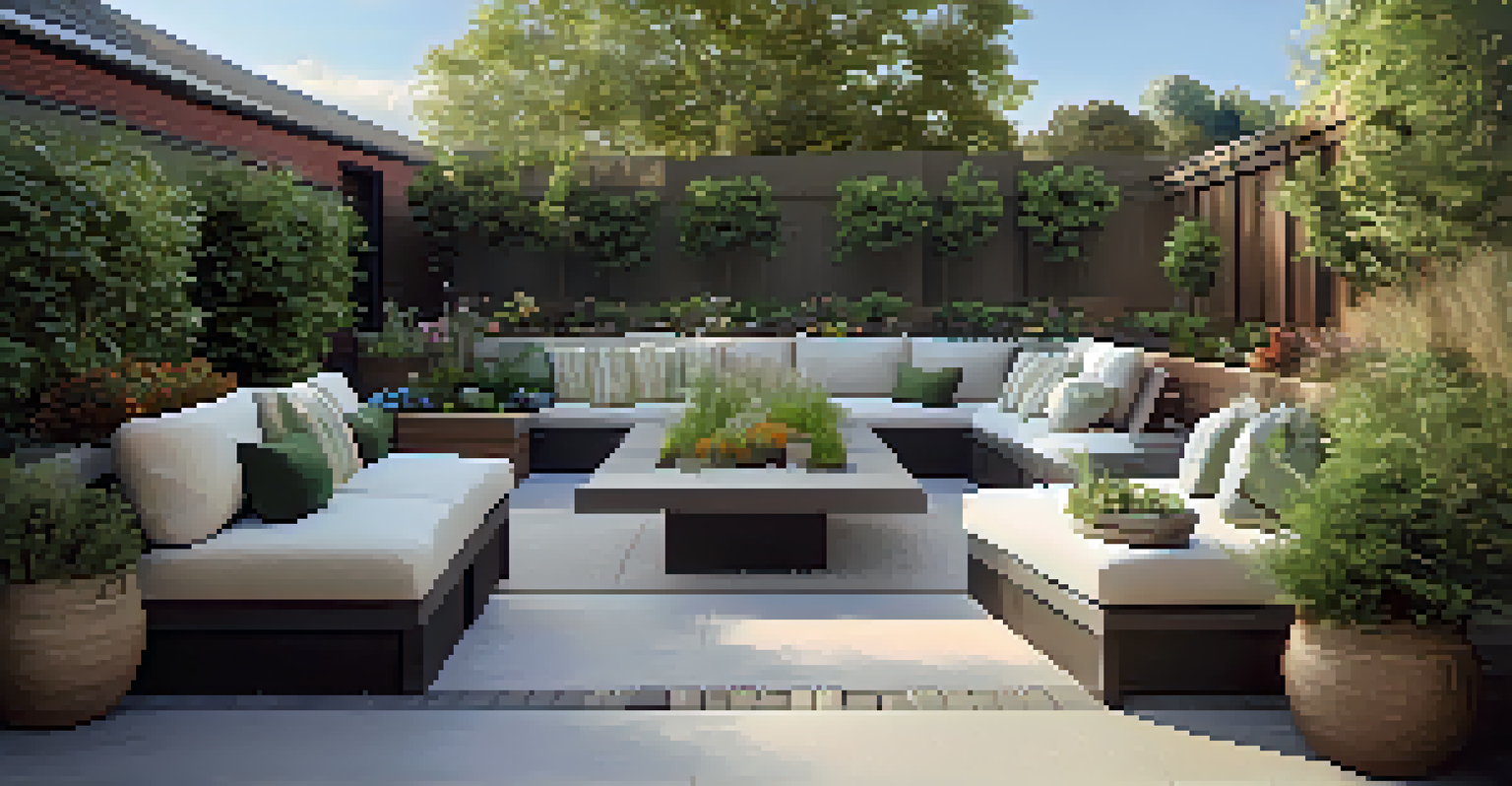Designing Open Concept Spaces for Aging in Place

Understanding Aging in Place: A Modern Necessity
Aging in place refers to the ability to live in one's home and community safely, independently, and comfortably as one ages. This concept is becoming increasingly important as more people prefer to stay in familiar surroundings rather than move to assisted living facilities. Designing open concept spaces can significantly enhance this experience by promoting accessibility and ease of movement.
Aging in place is about creating a supportive environment that allows individuals to maintain independence and quality of life as they age.
For instance, an open layout eliminates unnecessary barriers like walls and doors that can hinder mobility. This approach not only fosters a sense of spaciousness but also encourages social interaction, which is vital for mental well-being. When seniors can move freely and engage with family or friends, it creates a supportive environment that enhances their quality of life.
Moreover, an open concept space can make it easier for caregivers to assist aging individuals. With clear sightlines and minimal obstructions, caregivers can monitor their loved ones effectively, ensuring safety without compromising independence. This balance is crucial in creating a nurturing home environment.
Key Design Elements for Open Concept Spaces
When designing open concept spaces for aging in place, it's essential to prioritize key elements such as flooring, lighting, and furniture arrangement. Choosing non-slip flooring materials can prevent falls, which are a significant concern for the elderly. Additionally, opting for soft, even lighting helps reduce glare and shadows, making navigation safer and more comfortable.

Furniture placement also plays a crucial role in maintaining an open feel while ensuring accessibility. Arranging furniture to create clear pathways allows for easy movement, whether using a walker or wheelchair. Moreover, selecting multi-functional furniture can save space and reduce clutter, further enhancing the open concept design.
Aging in Place Enhances Independence
Designing open concept spaces allows seniors to live safely and comfortably in familiar environments.
Incorporating ergonomic furniture and adjustable fixtures can also be beneficial. For instance, adjustable dining tables or chairs can accommodate different needs, making it easier for seniors to engage in daily activities without discomfort. These thoughtful design choices can significantly improve the functionality of an open space.
Incorporating Smart Home Technology
Smart home technology can be a game-changer for aging in place, especially in open concept spaces. Devices like voice-activated assistants, smart lights, and automated thermostats can enhance comfort and safety. For example, a voice command can turn on lights or adjust the temperature, reducing the need for physical movement.
Home is not a place, it's a feeling. A space that feels safe, comfortable, and reflects who you are.
Moreover, smart security systems can provide peace of mind for both seniors and their families. Features such as remote monitoring and alerts can help ensure that seniors are safe in their homes. This integration of technology not only fosters independence but also connects seniors with their loved ones, even from afar.
However, it’s essential to choose technology that is user-friendly. Complicated devices can lead to frustration and decreased usage. Therefore, selecting intuitive systems will encourage seniors to embrace these advancements, making their living environment more convenient and secure.
Creating Accessible Bathrooms in Open Spaces
Bathrooms are often the most challenging areas for seniors, but they can be effectively integrated into open concept designs. Accessibility features, such as walk-in showers, grab bars, and raised toilets, can significantly enhance safety and usability. Designing a bathroom that is both functional and stylish can remove the stigma often associated with aging-related modifications.
Incorporating natural light through windows or skylights can also improve the aesthetic appeal while providing a welcoming atmosphere. An open layout allows for easier navigation between the bathroom and adjoining spaces, minimizing hazards. This seamless design approach creates a flow that promotes independence.
Smart Technology Improves Safety
Integrating user-friendly smart home devices can enhance comfort and security for seniors aging in place.
Furthermore, using slip-resistant materials and ensuring adequate storage can make a bathroom more manageable. For example, placing frequently used items within easy reach minimizes the need for bending or stretching, which can be challenging for seniors. These thoughtful adaptations contribute to a comfortable and safe bathing experience.
The Importance of Outdoor Spaces
Outdoor spaces can greatly enhance the aging in place experience, providing opportunities for fresh air, exercise, and social interaction. Designing accessible patios or gardens that flow seamlessly from the interior can encourage seniors to spend time outside. Incorporating raised garden beds or seating areas can promote physical activity while making outdoor spaces enjoyable.
Moreover, connecting indoor and outdoor areas creates a sense of continuity, making the home feel larger and more inviting. Accessible pathways and well-placed seating can encourage seniors to engage in outdoor activities without feeling overwhelmed. This connection to nature has been shown to improve mental health and overall well-being.
Additionally, ensuring that outdoor spaces are safe and easy to navigate is crucial. Installing non-slip surfaces, providing adequate lighting, and maintaining clear pathways can significantly reduce the risk of falls. These considerations help create an environment where seniors can thrive both inside and outside their homes.
Personalizing Open Concept Spaces for Comfort
Personalization is key when designing open concept spaces for aging in place. Creating an environment that reflects the individual's personality and preferences fosters a sense of ownership and comfort. This can be achieved through decor, color schemes, and the inclusion of cherished items that evoke positive memories.
Incorporating familiar textures or family heirlooms can create a warm, inviting atmosphere. For example, using soft fabrics and comfortable furnishings can make a space feel cozy and welcoming. Personal touches can also include artwork or photographs that resonate with the individual, making the space truly their own.
Personalization Boosts Emotional Well-Being
Creating personalized spaces helps seniors feel a sense of ownership and connection, positively impacting their mental health.
Ultimately, a personalized space not only enhances comfort but also supports emotional well-being. When seniors feel connected to their environment, it can positively impact their mental health. This sense of belonging is essential for fostering independence and maintaining a high quality of life.
Conclusion: Embracing Open Concept Design for All Ages
Designing open concept spaces for aging in place is not just about functionality; it's also about creating a nurturing environment that promotes independence and well-being. By focusing on accessibility, safety, and personalization, we can craft homes that cater to the needs of seniors while remaining inviting for all ages. This approach ensures that homes continue to support residents as their needs change over time.
Moreover, embracing open concept designs can foster a sense of community and togetherness. Families can gather in shared spaces, creating opportunities for connection and engagement. This design philosophy encourages an intergenerational living experience that benefits everyone involved.

As we continue to adapt our living spaces for the future, it's vital to remember that good design can significantly enhance the quality of life for seniors. By thoughtfully considering their needs and preferences, we can create open concept environments that truly feel like home.